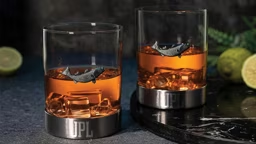
Balance is essential to any conservation effort. If you’ve noticed fewer loons at your lake over the past few years, you may be able to help by improving their habitat. In the last century, bird populations have had to adapt rapidly to changes in land use around the world. As suitable nesting habitat has become harder to find, some populations, including loons and other water birds like herons, wood ducks, kingfishers, and spotted sandpipers, have started to decline in some areas.
To keep populations healthy on your lake, you can take action. One option is to build an artificial nesting platform (ANP), a floating platform that you anchor in your lake. But before you do, it’s important to go through the proper channels. Some loon lovers have acquired permits to build ANPs, but experts recommend that your first approach is more hands-off than you might expect.
Encouraging natural loon habitat
There’s no substitute for great habitat, and loons like to live on lakes with shallow nursery areas, natural nesting structures, and minimal human disturbance.
One of the best ways to encourage loons and other water birds to visit your favorite lakeshore is to allow deadfall trees to remain where they’ve naturally toppled into the water. Deadfalls attract a variety of aquatic prey, including insects and fish, and water birds often use these structures for fishing. Human anglers may enjoy the benefits of these habitats as well.
Birds also use deadfalls as private roosts and loafing platforms, so you may be as likely to see a resting family of wood ducks as a stealthily hunting heron.
I’ve seen many loon nests built on parcels of natural habitat like tiny islands, mounds of marshy vegetation in protected shallow bays, and even on a floating raft of naturally uprooted water lilies. This well-camouflaged nest would rise in flood waters and, far from shore, prevent mammalian predators from eating the eggs. In many ways, it was perfect. But not all loons have these options. And that’s where an ANP can help.
Discovering an artificial nesting platform
Last summer, while kayaking a pristine northern lake, I found a loon nest that was just one step better than the water lily nest; this one provided shade. The adult loon incubated eggs on a floating hummock of bog in a shallow bay close to a shoreline of boggy vegetation. The loon sat under the luxurious shade of an alder bush, concealed behind blue flag iris.
From this natural beauty, a small piece of white plastic attracted my eye. Looking through binoculars, I realized I spotted PVC pipe. It suddenly occurred to me that this lovely floating nest was anchored and turning in the wind. It was a nesting platform, complete with natural vegetation, built for a loon by a human.
See also Why do groups of loons congregate on the lake?
Is an ANP right for your lake?
Correctly done, ANPs can boost nesting success on lakes where loons are, year after year, victims of “bad luck,” losing their nests repeatedly to predators or losing habitat to development projects or flood waters.
But the platforms can also make loons more visible to predators than natural nesting platforms. And because waterways are a shared resource, they’re likely regulated by your state’s natural resources department.
Erica LeMoine, LoonWatch Program Coordinator for the Sigurd Olson Environmental Institute at Northland College in Ashland, Wis., recommends that you observe that the loons at your lake have had “at least 3 years of unsuccessful nesting attempts” before you consider an ANP project. Check with your state’s natural resources department for information on whether your local loons have successfully nested.
The institute also offers these questions to consider before pursuing an ANP project. If you answer “yes” to any of them, an ANP might not be a good choice for your lake:
• Do loons produce chicks on your lake once every 3 years?
• Do your loons successfully nest on a nearby lake?
• Are there natural nesting locations on your lake that could be enhanced?
• Are you unsure about how loons are using your lake (feeding, nesting, etc.)?
If you said “no” to these questions, and you want to pursue an ANP project, contact your state’s natural resources department to learn what to do next. The biologists there can help you select the right spot for an ANP and walk you through what you’ll need in order to get a permit to install one.
Planning for maintenance
Before you commit, you’ll also want to consider maintenance. LeMoine says that an ANP project is a lifetime commitment; neglecting the platforms can cause nest failure.
The platforms need to be removed from the lake seasonally so they don’t freeze. The vegetation planted on top needs to be renewed periodically, and the platforms need to be returned to the lake as soon as the ice melts. Loons are one of the first birds to migrate back in the spring; if you put the platform out too late, the loons will already have looked for other nests.
Community-building effort
Because an ANP project can be a commitment, especially for a cabin owner who isn’t always at the lake, it’s a good idea to take this opportunity to involve your family, neighbors, and lake association in your plans. Teaming up with others who have the right tools and experience will make the process run smoothly. Don’t let the scope of the project stop you. It’s about more than building nests; it will also build community.
Brian Collins volunteers for Northland College’s Sigurd Olson Environmental Institute. Visit www.imagesinnaturallight.com to see more of his work.
To download a free PDF on artificial nesting platforms (ANPs) that includes plans for a time-tested, loon-approved design from The Sigurd Olson Environmental Institute of Northland College, click here.
To track the annual spring migration of loons, visit www.umesc.usgs.gov.










